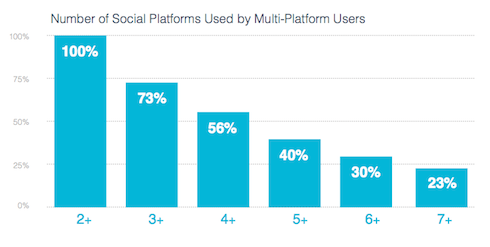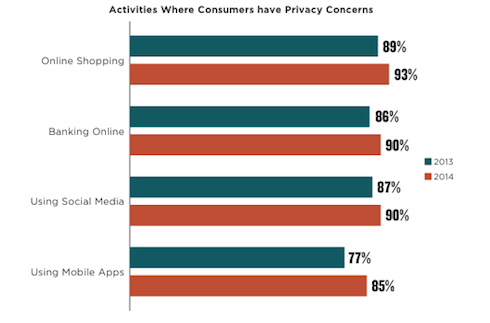By adaptive - June 10th, 2014
Social media usage has shifted with more users considering which platforms they use and the level of privacy they demand
Research from Pew Internet reveals that 73% of online adults use at least one social media network with 42% using multiple networks. For corporations deciding which social media platforms to maintain a presence on can be vital marketing knowledge to obtain.
Also, insights gained into multiple site usage from 140 Proof and IPG Media Lab suggests that businesses also need to understand what activity consumers are engaged in on each of their social media networks, as usage profiles can be quite different.
“People do not use social networks for the same purposes,” concluded the report from 140 Proof. “The nature of different platforms makes each suited for connecting with different types of people, engaging with different types of content, and pursuing different interests. People using multiple platforms engage in social hygiene, which means that they are conscious of their activities on each and make intentional decisions to expose different aspects of their identity on different social networks.”

As social media usage has proliferated consumers are increasing being more critical of the social media networks they use. Social hygiene is clearly a phenomenon with consumers cleaning their social media networks of unwanted links or other connections. The fact that consumers are so proactive with their chosen social networks, and keep the data contained on them up-to-date, is highly useful data for all corporations when developing marketing campaigns.
The behaviour that is being seen across social networks when brand associations is concerned is also interesting to take note of. Consumers are increasingly becoming attuned to ad messages that are targeted at only their particular interests. Brands need to take note that this level of personalisation is now an accept norm with social media users moving away from brands that don’t ensure their messages are relevant and timely.
Coupled with social hygiene is the level of social login that continues to proliferate. Consumers are now cleaning their social media environment regularly, but are also continuing to use social login as a convenient means of access new services. This is vital information for corporations that need to offer a seamless integration of their services across social networks. The trinity of relevant ad messages, social login and social hygiene is a powerful paradigm that is continuing to shape the social media environment.
Security pressure
This year’s TRUSTe consumer confidence report also places another element into the social hygiene mix: The level of privacy that consumers feel when using social media networks can have a huge impact on usage.

TRUSTe state: “The potential impact of this concern over business privacy practices is significant as consumer trust is falling. Just over half of US Internet users (55%, down from 57% in 2013) say they trust businesses with their personal information online. Furthermore, 89% say they avoid companies they do not trust to protect their privacy, the same as in January 2013. 70% said they felt more confident that they knew how to manage their privacy than one year ago, but this can cause consumers to take actions, which negatively impact businesses.”
Says Steve Wilkinson, managing partner, UK & Ireland client service at EY: “The rise of digital natives – those that have grown up with an inherent understanding of technology – means that today’s customers understand the dangers of sharing information online and try to protect it by restricting the access private companies have to their personal data.
“What our survey shows is a shift in attitudes and practices towards how consumers treat their personal data, and the access they will allow to their data, both now and in future. Despite well-publicised government missteps towards data privacy, consumers still appear more willing to share personal data with public sector organisations. On the other hand, there is a growing trend to revoke the access that private companies have to such information. As a result, we are likely to see a change in which bodies have the greatest access to customer information in the next 5-to-10 years.”
What is clear is that consumers are now more sophisticated with their use of social media. They keep the information they include on these networks current, but regularly assess how useful a network is to them.
They are not shy with cutting a social network if it is not offering relevant and useful information and insight. Brands that fail to target messages to them personally are particularly vulnerable to being dropped by consumers that are increasingly looking for personalised campaign messages. Corporations should take note and not assume that their customers simply adopt the latest social media network that is grabbing the zeitgeist.
Image Source: Freedigitalphotos.net
Next Reads
June 2014, New York
Become a social business: For superior marketing response, sharper corporate decision-making, enhanced innovation and a happier, more loyal customer
Brochure Programme